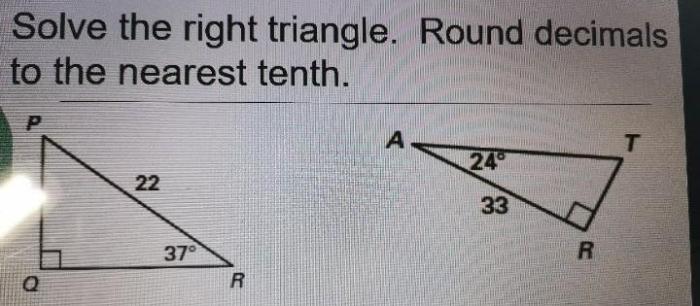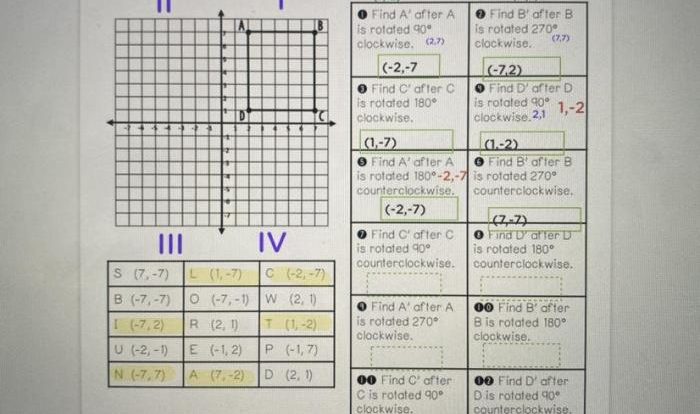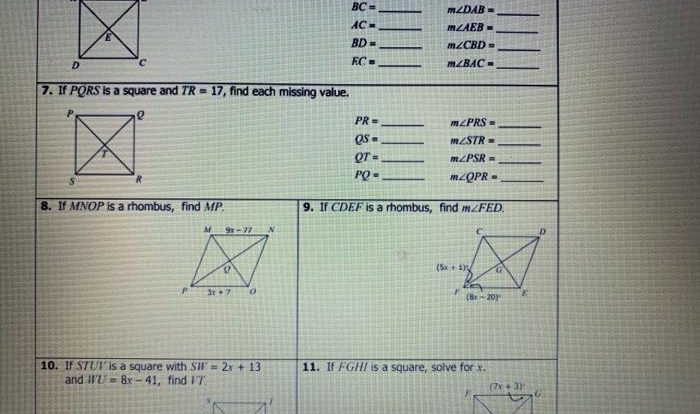Embark on a comprehensive journey through geometry chapter 6 study guide answers, a definitive resource that empowers students to grasp the intricacies of geometry and excel in their academic pursuits.
Delving into the fundamental concepts, problem-solving strategies, theorems, and real-world applications, this guide provides a thorough understanding of geometric principles and their significance in various fields.
Geometry Chapter 6 Study Guide Answers

This study guide provides comprehensive answers to the concepts covered in Chapter 6 of geometry. It includes clear definitions, examples, and explanations of key terms and theorems, as well as problem-solving strategies and real-world applications.
Concepts, Geometry chapter 6 study guide answers
Chapter 6 of geometry covers the following fundamental concepts:
- Congruence and Similarity: Explores the properties of congruent and similar figures, including triangles, circles, and other geometric shapes.
- Transformations: Discusses various types of transformations, such as translations, rotations, reflections, and dilations, and their effects on geometric figures.
- Triangle Congruence Theorems: Introduces theorems that establish conditions for proving triangles congruent, including the Side-Side-Side (SSS), Side-Angle-Side (SAS), Angle-Side-Angle (ASA), and Angle-Angle-Side (AAS) theorems.
- Triangle Similarity Theorems: Presents theorems that establish conditions for proving triangles similar, including the Side-Side-Side (SSS), Side-Angle-Side (SAS), and Angle-Angle (AA) theorems.
Problem-Solving Strategies
Effective problem-solving strategies for geometry include:
- Understanding the problem: Read the problem carefully and identify the given information and what is being asked.
- Drawing a diagram: Sketch a diagram to visualize the problem and identify the relevant geometric shapes and relationships.
- Using appropriate theorems: Apply relevant theorems and properties to solve the problem.
- Checking the solution: Verify that the solution is reasonable and satisfies the given conditions.
Theorems and Proofs
Important theorems introduced in Chapter 6 include:
- Triangle Congruence Theorems: SSS, SAS, ASA, and AAS theorems
- Triangle Similarity Theorems: SSS, SAS, and AA theorems
- Pythagorean Theorem: Relates the lengths of the sides of a right triangle
Proofs for these theorems involve logical reasoning and the application of definitions and properties.
Applications in Real-World Scenarios
Geometry concepts covered in Chapter 6 have various real-world applications, including:
- Architecture: Designing buildings and structures with specific shapes and dimensions
- Engineering: Calculating forces and stresses in bridges, buildings, and other structures
- Design: Creating aesthetically pleasing and functional designs in art, fashion, and industrial products
Review and Assessment
To review and assess understanding of Chapter 6 concepts, consider the following:
- Practice problems: Solve a variety of problems covering different topics and difficulty levels.
- Quizzes and tests: Evaluate comprehension of key concepts and problem-solving abilities.
- Self-assessment: Reflect on understanding and identify areas for improvement.
FAQs: Geometry Chapter 6 Study Guide Answers
What are the key concepts covered in geometry chapter 6?
Chapter 6 of geometry encompasses fundamental concepts such as angles, triangles, quadrilaterals, circles, and their properties, laying the foundation for understanding more complex geometric principles.
How can I effectively solve geometry problems?
Geometry chapter 6 study guide answers provide step-by-step problem-solving strategies, including identifying relevant theorems, applying logical reasoning, and utilizing geometric tools to arrive at accurate solutions.
What is the significance of theorems in geometry?
Theorems serve as fundamental building blocks of geometry, establishing relationships between geometric shapes and their properties. Understanding and applying theorems enables students to prove geometric statements and solve complex problems.


